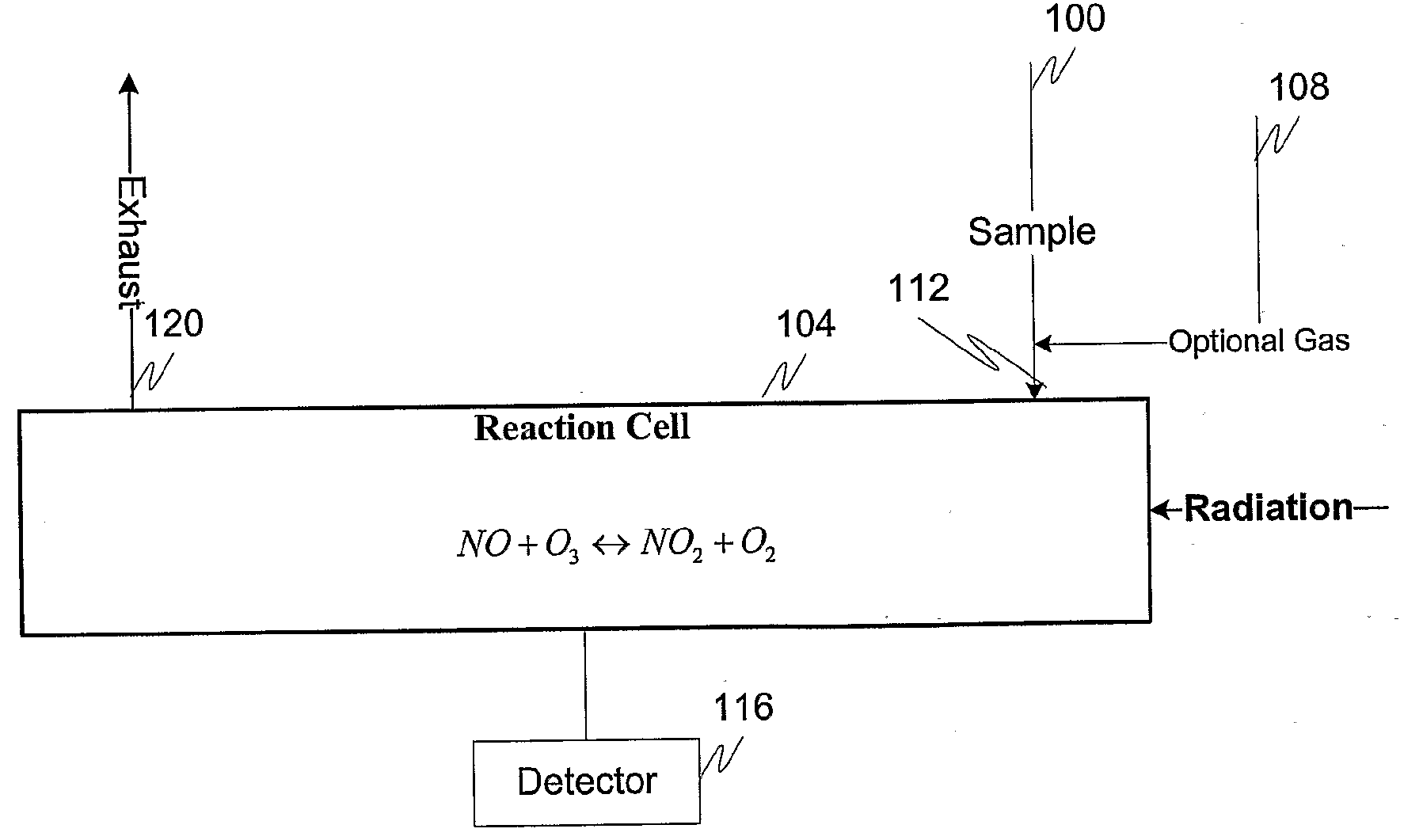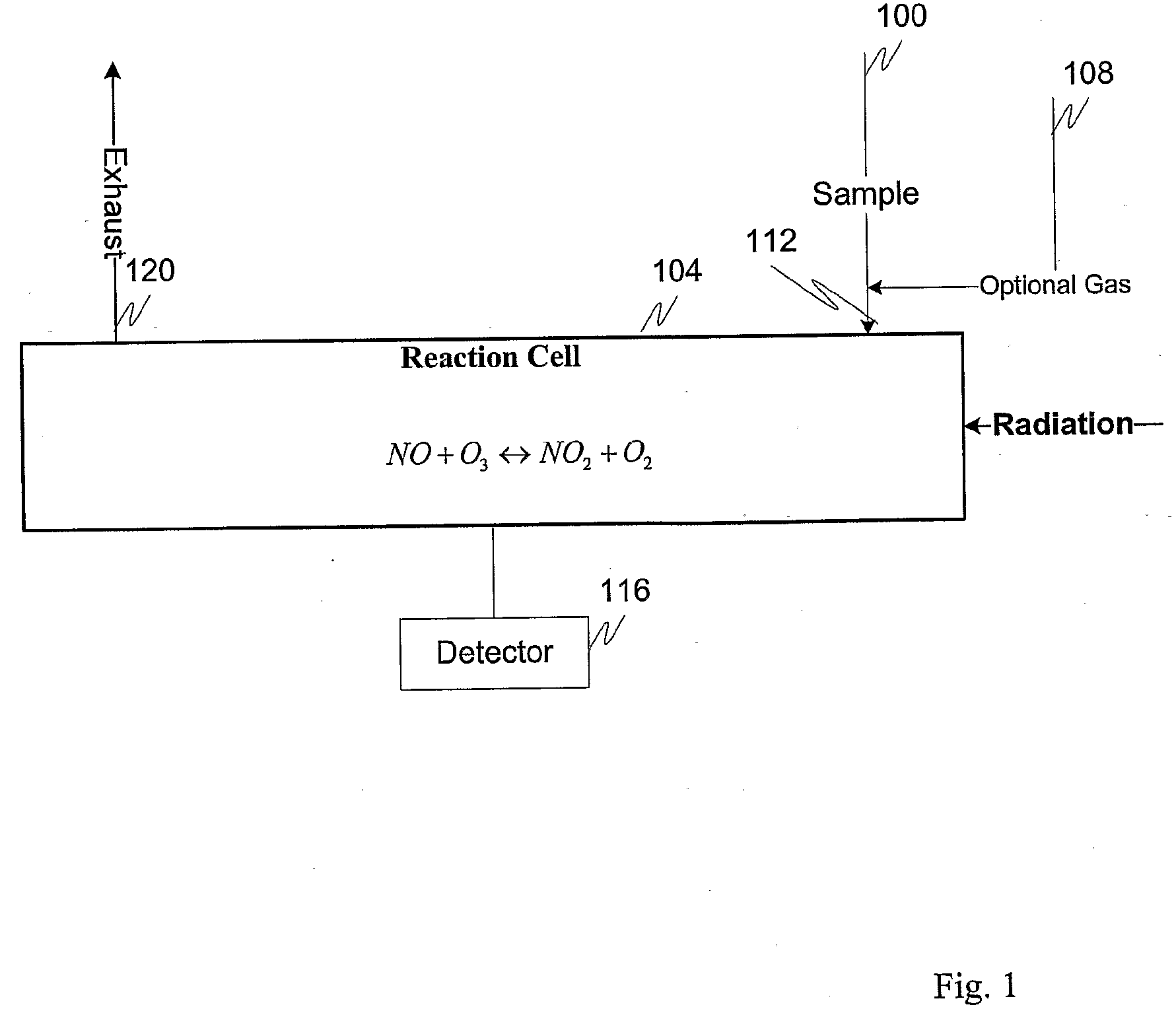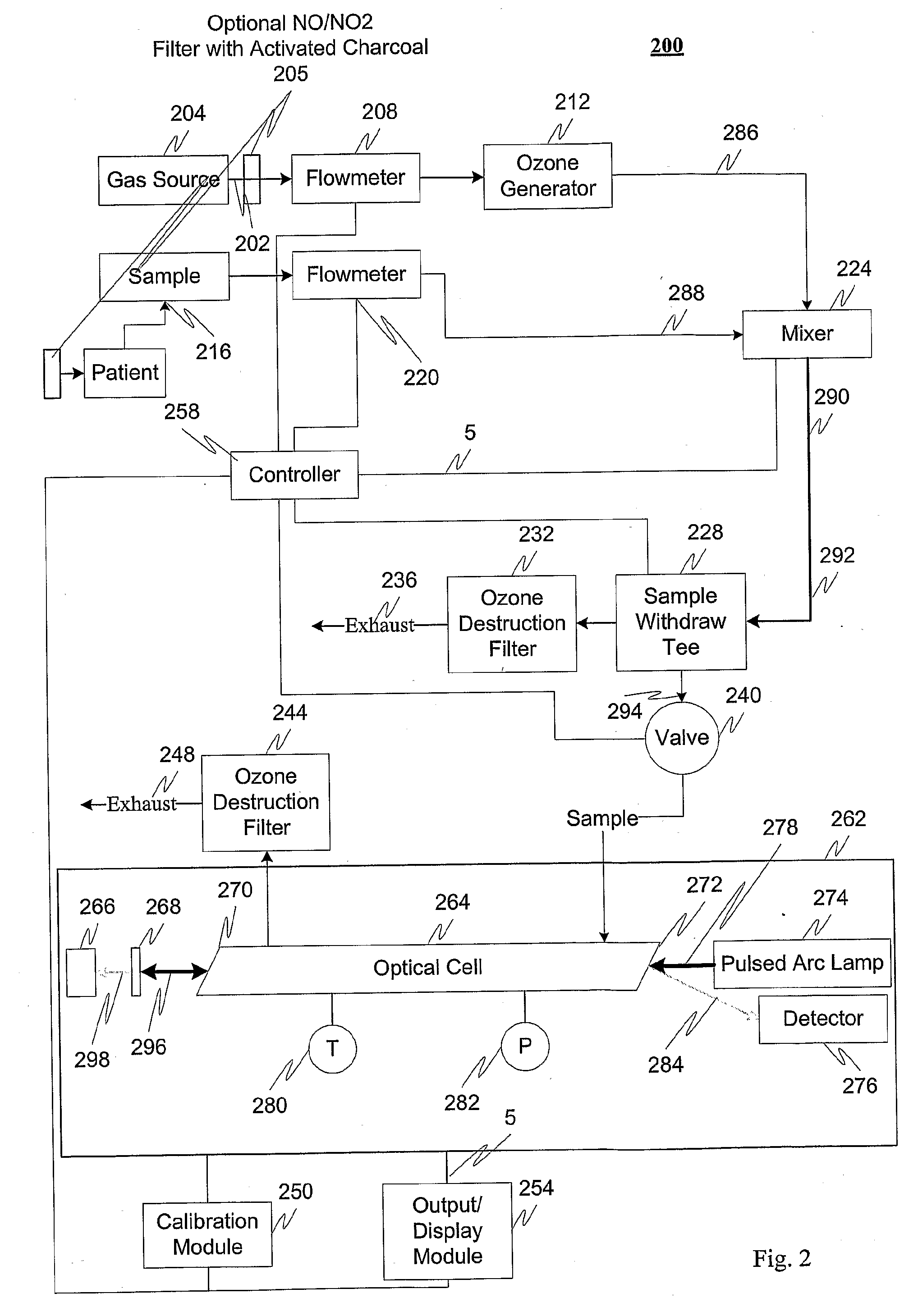Measuring nitrogen oxides and other gases by ozone formation
a technology of nitrogen oxides and other gases, applied in the field of nitrogen oxide measurement, can solve the problems of adding significant weight and cost to these instruments, ozone depletion methods are susceptible to interference by any species, and chemiluminescent methods require calibration with expensive standards of no gas, etc., to achieve the effect of reducing the requirement for recalibration, reducing the cost of components, and reducing the weight and cost of instruments
- Summary
- Abstract
- Description
- Claims
- Application Information
AI Technical Summary
Benefits of technology
Problems solved by technology
Method used
Image
Examples
Embodiment Construction
[0041]The exemplary systems and methods of this invention will be described in relation to photolyzing one or more gases. However, to avoid unnecessarily obscuring the present invention, the following description omits well-known structures and devices that may be shown in block diagram form, are generally known or are otherwise summarized. For purposes of explanation, numerous specific details are set forth in order to provide a thorough understanding of the present invention. It should however be appreciated that the present invention may be practiced in a variety of ways beyond the specific detail set forth herein.
[0042]The term “module” as used herein refers to any known or later developed hardware, software, or combination of hardware and software that is capable of performing the functionality associated with that element. Also, while the invention is described in terms of exemplary embodiments, it should be appreciated that individual aspects of the invention can be separatel...
PUM
 Login to View More
Login to View More Abstract
Description
Claims
Application Information
 Login to View More
Login to View More - R&D
- Intellectual Property
- Life Sciences
- Materials
- Tech Scout
- Unparalleled Data Quality
- Higher Quality Content
- 60% Fewer Hallucinations
Browse by: Latest US Patents, China's latest patents, Technical Efficacy Thesaurus, Application Domain, Technology Topic, Popular Technical Reports.
© 2025 PatSnap. All rights reserved.Legal|Privacy policy|Modern Slavery Act Transparency Statement|Sitemap|About US| Contact US: help@patsnap.com



